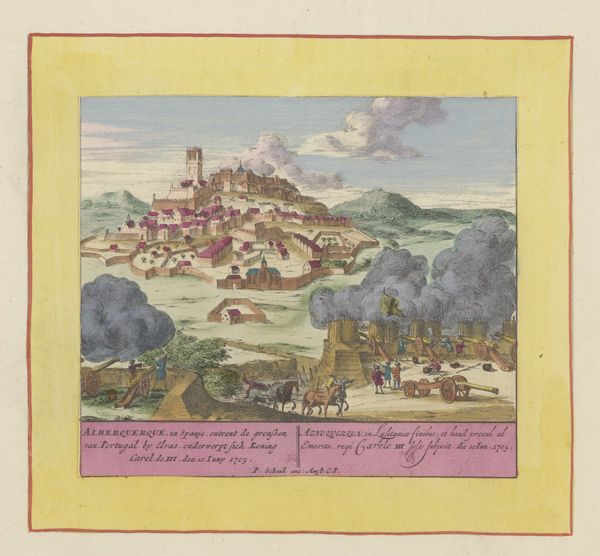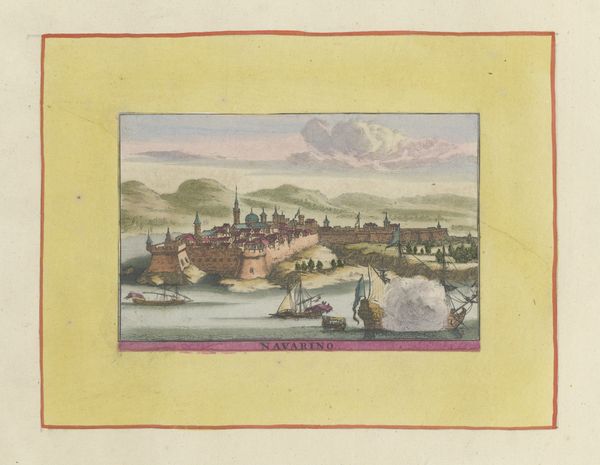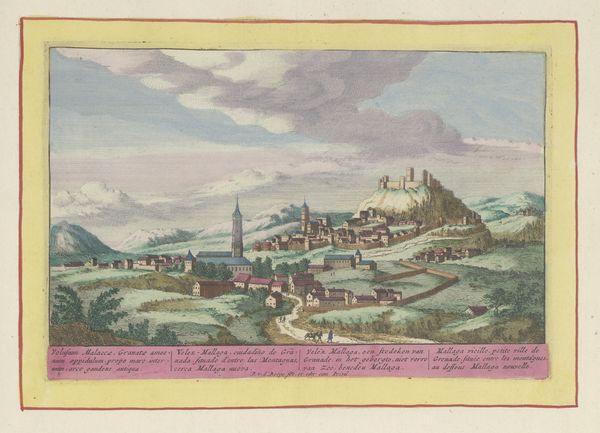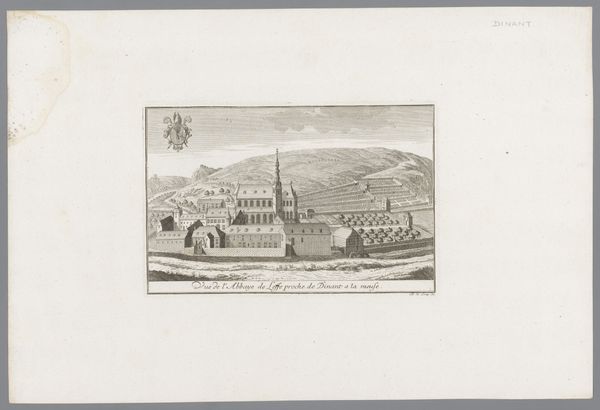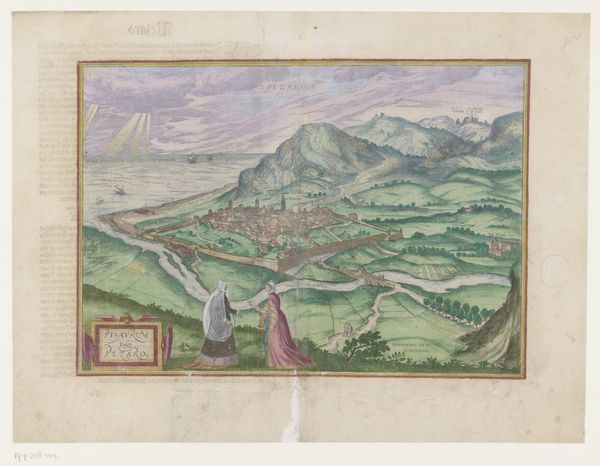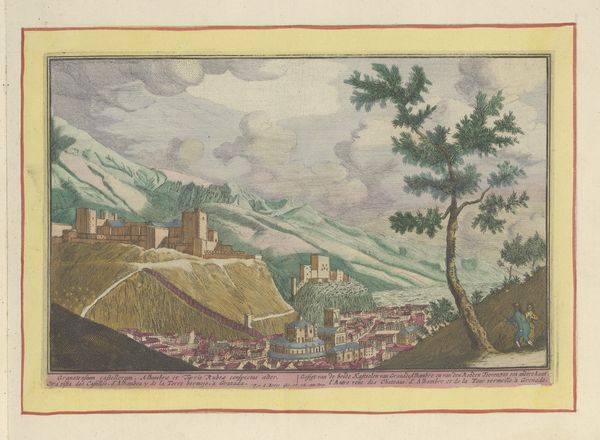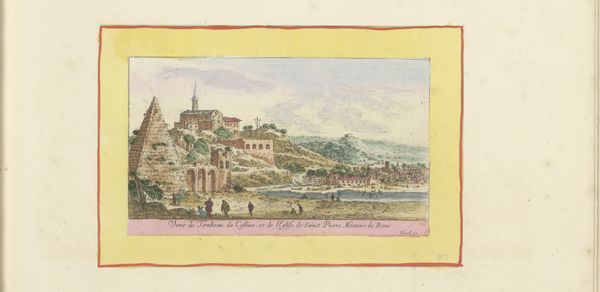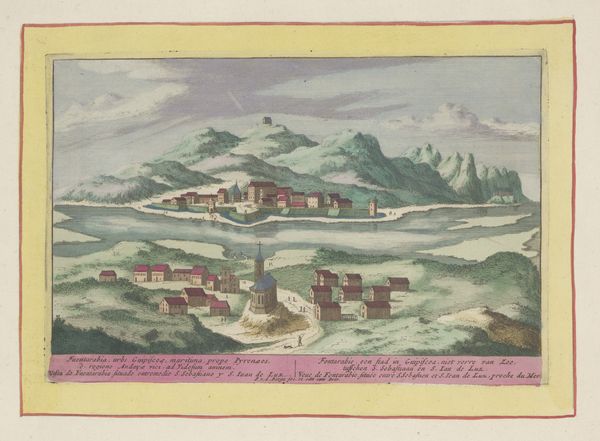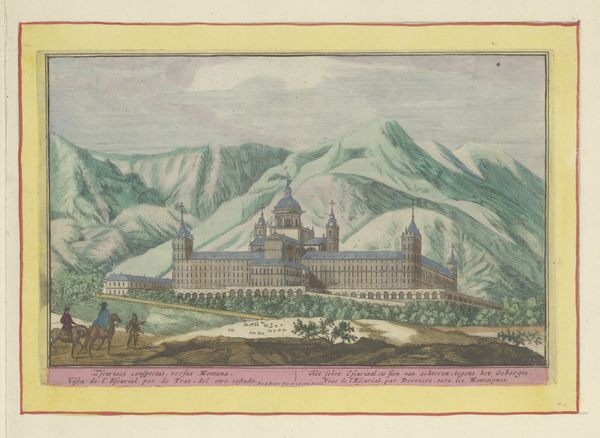
watercolor
#
water colours
#
baroque
#
landscape
#
watercolor
#
coloured pencil
#
cityscape
Dimensions: height 93 mm, width 137 mm
Copyright: Rijks Museum: Open Domain
Willem Swidde created this print of Zarnata Castle sometime before his death in 1697, using engraving and etching techniques, with added hand-coloring. The image presents us with a bird's-eye view of a fortified town, a common subject in the Netherlands during its Golden Age. Such images were not simply topographical records; they served as assertions of power and control. The Dutch Republic, a major player in European politics and trade, used images like this to map and claim territories, both at home and abroad. Consider the details: the imposing walls, the strategic placement on a hill, and the orderly arrangement of buildings within. These elements speak to the importance of military defense and urban planning in a time of frequent conflict. This print embodies the cultural values of the time, emphasizing order, control, and the importance of civic life. To truly understand this image, historians might consult maps, military records, and urban plans from the period. The meaning of art is always contingent on social and institutional context.
Comments
No comments
Be the first to comment and join the conversation on the ultimate creative platform.
